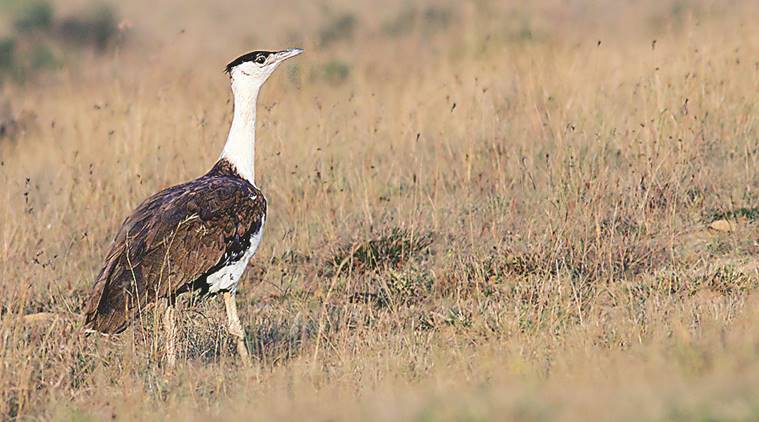
According to recent reports, there are just about 150 Great Indian Bustards (GIB) left in the wild, most of which are probably trying to avoid being sliced into pieces by windmill propeller blades or electrocuted by high-tension wires strung along their flight paths. It’s not going to be very long before the last of these magnificent birds meets a gory end. Yet how many of us will register, let alone mourn their passing? How many of us even know that the GIB is a bird — Rajasthan’s state bird to boot, and once in the running for the National Bird title — let alone having seen one?
Even if we have encountered the bird in films and the print media, it remains so far removed from our everyday lives that its passing is not going to make an iota of difference to our lives — at least, that’s what we think. That’s the trouble with rare creatures: how many of us know what the hispid hare or the pygmy hog is? At best, there might be a twinge of regret for the bustard, and then, we move on. And some in government might even rub their hands in glee and exclaim: “Well, now that the bustard is gone, we can put up as many windmills and high-tension wires as we like: problem solved” (ignoring the fact that the bustards are not the only victims of these).
So, we move on to the next extinction: Will it make a difference if the Ganges river dolphin disappears, or for that matter the gharial? Conservationists will say, of course, it does: it makes a huge difference — these are apex predators in their habitats and vital to their ecosystem. And that every living creature, big or small, has its role to fulfill in maintaining the balance of nature. Take a cog out of the machine and it will malfunction. Take too many cogs out and it will grind to a halt. You might interject that despite missing cogs, we’re still chugging along like old Ambassadors. But what we forget is that we’re one of the cogs as well: the spanner in the works, actually — the really redundant cog.
Who knows (or cares) about the last 10 individuals of a species which is about to die out? If there were only 10 left anyway, it won’t make a jot of difference more than if there were zero. Extinction also happens to creatures which have not always been rare. Perhaps, the leading example of this is the passenger pigeon of the US whose numbers could darken skies for hours at a stretch. And, then, suddenly there was just one left — in the Cincinnati Zoo — and, of course, she died. Closer home, that’s what happened to vultures. I grew up watching squadrons of vultures float and wheel over the Bombay skies, imagining them to be bombers on a mission. Children nowadays will be hard-pressed to recognise one, let alone admire its flight and the way its upturned wingtip feathers resembled the winglets of modern jets. For me — and anyone interested in nature — their disappearance has left a brooding sense of unease. It was the same unease I felt when the lovely Siberian Crane stopped coming to Bharatpur: they were not globally extinct, for sure, but the question arose: “where will they disappear from next?”
There have been animals that have been brought back from the brink: our own Asiatic lion, the great Indian one-horned rhinoceros, and, in America, the bison. Sure, and thankfully, they have been “rescued” but they’re all the big stars of the natural world — who also bring in big bucks from tourist revenue (and in other countries from hunting permits). But if you tell the authorities that it would not be wise to ram a sixteen-lane expressway through a rainforest because it would hamper the movement of endangered monkeys (like the lion-tailed macaque) or rare frogs, you are likely to be countered thus: “What? You want to stop this country’s development, so that frogs and monkeys can move about freely? Do you want to be arrested for being anti-national or what?”
It’s always amazed me: you can be jailed for seven years if you kill a peacock, but the government can drown and fell entire tropical forests, bulldoze expressways through national parks — killing and destroying the homes of countless creatures, including plants, insects, fish, crustaceans, amphibians, reptiles, birds and mammals — common, endangered or critically endangered, without batting an eyelid. All because they chant the magic voodoo word, “development”.
The poor bustard’s time certainly seems to have come. And even if we use genetic magic to bring it back in the future — you can be sure of one thing: all of its grassland habitats will have been gobbled up by then and there’ll be no place left for it to call home.
Ranjit Lal is an author, environmentalist and bird watcher.